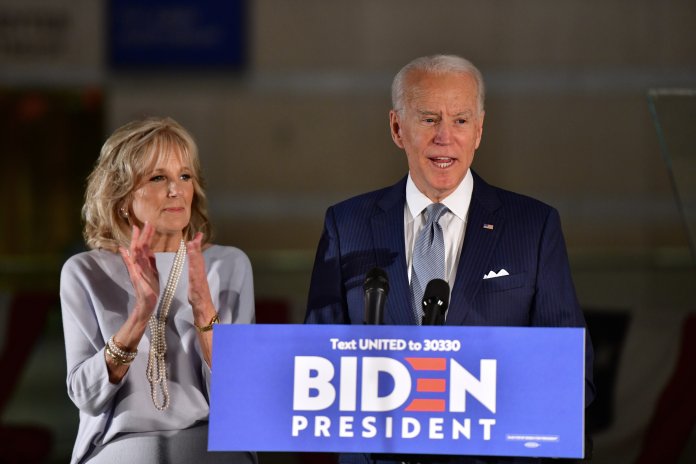10:22
Brief
News Briefs
U.S. Senate panel calls on governors, mayor to talk big new infrastructure package
WASHINGTON — Senators who could decide the fate of President Joe Biden’s push for a major new infrastructure package seemed open to his priorities at a hearing Wednesday, particularly Biden’s emphasis on replacing vehicles that run on gas and diesel with ones that use electric power.
But when it came to the question of who should oversee new federal transportation money—states or city governments — there was far less agreement.
The governors of Michigan and Maryland, as well as the mayor of Denver, Colo., debated who gets to control the cash and how it should be used at a mostly cordial hearing with members of the Senate Committee on Environment and Public Works.
The hearing marked the first time the panel formally discussed some of the ideas put forward by Biden for a massive new infrastructure package. The committee oversees transportation policy but not the question of how to pay for any new spending.
Whitmer asks for federal help
The panel heard from two governors known for proposing ambitious, if not always successful, infrastructure improvement plans: Democrat Gretchen Whitmer of Michigan and Republican Larry Hogan of Maryland.
The two will be among the governors slated to meet with the president and Transportation Secretary Pete Buttigieg on Thursday.
In one regard, the hearing was remarkable for the bipartisan consensus that electric vehicles in the United States would soon replace vehicles running on fossil fuel.
Biden set a goal early in his administration to replace the 650,00 vehicles of the federal fleet with electric vehicles, and within days automaker General Motors said it is setting a goal of shifting all of its production to electric vehicles by 2035.
Whitmer said automakers in Michigan need federal support to make that transition. But she said that making the switch would help the American economy.
“For too long, there’s been a misconception that preparing for the future comes at the expense of economic growth and good paying jobs today. But it’s not a binary choice,” she said. “The health of our economy is inextricably linked to the health of our people and our planet.”
U.S. Sen. Debbie Stabenow, a Michigan Democrat, warned, though, that the federal government had to promote electric vehicles now if it wants the United States to remain a leader in that technology.
“Our companies are investing tens of billions of dollars in the future right now. They cannot get there without a partnership with us. China has invested $100 billion to get ahead of us,” she said.
“We really are in a race, a competitive race that we can win. Right now the majority of the expertise in technology is in America. But it won’t be unless we are partnering with [U.S. automakers].”
Denver mayor presses for change
One of the few dividing lines that emerged came over how federal transportation money is distributed. The federal government’s main role in transportation is deciding what to pay for; it leaves the construction to state and local governments.
Right now, states get the overwhelming majority of federal transportation money. Then they decide how to divvy it up.
Mayors and other city officials have long chafed at that arrangement, because it essentially cuts them out of the process. If a governor or highway department wants to focus on rural highways instead of city bus lanes, there’s not much local officials can do.
Denver Mayor Michael Hancock told the Senate committee that Congress should change that arrangement, because, he argued, cities are better at coming up with projects that reduce greenhouse gas pollution and that address the needs of minority communities.
Biden has said that both of those are top priorities for him in a new infrastructure package.
“Keep states focused on intercity and interstate corridors,” Hancock said. “Local governments have the ability to be much more nimble [in addressing] the challenges facing their residents.”
“Here’s the reality: 80% of all the roads that we, as citizens, travel on are sitting in front of our homes or are there in front of our small businesses,” he added. “And yet, [as cities] we’re only seeing a small portion of the resources that are coming to our states.”
Shifting money away from states, though, will not be an easy sell. Governors and state transportation officials say they need a dependable but flexible source of federal money in order to plan major construction projects that take years to line up.
Hogan, who led an effort by the National Governors Association to help states find new ways to pay for infrastructure, told the senators that Congress should continue to distribute money among states based on formulas already in federal law.
Offering states and cities the chance to apply for competitive grants instead, an approach that the Obama administration used, adds too much uncertainty, Hogan said.
“It’s hard with discretionary funding to make long-term planning decisions,” he explained. “Having flexibility to do what we want but having the certainty of the funding formulas is something governors would prefer.”
Senators challenge Hogan
Hogan said in Maryland, his transportation department works with local communities to determine which projects should move forward.
“The states can help prioritize,” he said. “There’s no question about it that there’s a lot of need. We can’t do everything at the same time. So we want to make sure that we all agree on the priorities.”
But two Democratic senators questioned whether that state-centric approach worked, citing the example of Hogan canceling the Red Line transit project in Baltimore.
U.S. Sen. Ben Cardin, a Democrat from Maryland, said the current system made it difficult for cities like Baltimore to attract new projects.
Hogan has repeatedly pushed using partnerships with private companies to build infrastructure under his watch, whether to build a light rail line in the suburbs of Washington, D.C., or to expand the capacity of the Washington Beltway.
But those kinds of projects are unlikely to work in Baltimore, Cardin said.
“It seems to me that in many respects it’s more challenging to use public-private partnerships in urban centers. And for a city like Baltimore… transit development has become more challenging,” Cardin said.
Hogan told him that Baltimore could use a partnership with private companies to build a transit network, but it would “have to be attractive to the private sector.”
Sen. Jeff Merkley, an Oregon Democrat, asked Hogan whether he supported a goal of the Biden administration that 40 percent of federal spending should benefit disadvantaged communities. Merkley said the goal could prevent situations like the initial construction of Washington, D.C.’s subway system, which initially served predominantly white neighborhoods but took decades to reach many of its predominantly Black neighborhoods.
“The [Baltimore] Red Line has the same national reputation,” Merkley told Hogan.
The project was designed to help connect low-income, Black neighborhoods to job centers. It also would have brought investments into long-neglected areas of the city and improved air quality for their residents.
“But that is a project you chose to cancel and put the funds instead in predominantly white communities,” Merkley said.
“Well, senator,” Hogan shot back, “I would totally disagree with your assertion for a number of reasons. But we don’t have time to debate that here this morning.”
The governor said that more than 50 percent of the state’s transportation spending had occurred in underserved neighborhoods. The Purple Line light rail system, he noted, will include Prince George’s County, where almost two-thirds of the residents are Black. Sixteen of its stops, he added, are in minority communities.
Whitmer, the Michigan governor, said she supported the emphasis on racial equity for federally funded projects, but she did not commit to a numeric goal.
Our stories may be republished online or in print under Creative Commons license CC BY-NC-ND 4.0. We ask that you edit only for style or to shorten, provide proper attribution and link to our website. AP and Getty images may not be republished. Please see our republishing guidelines for use of any other photos and graphics.





